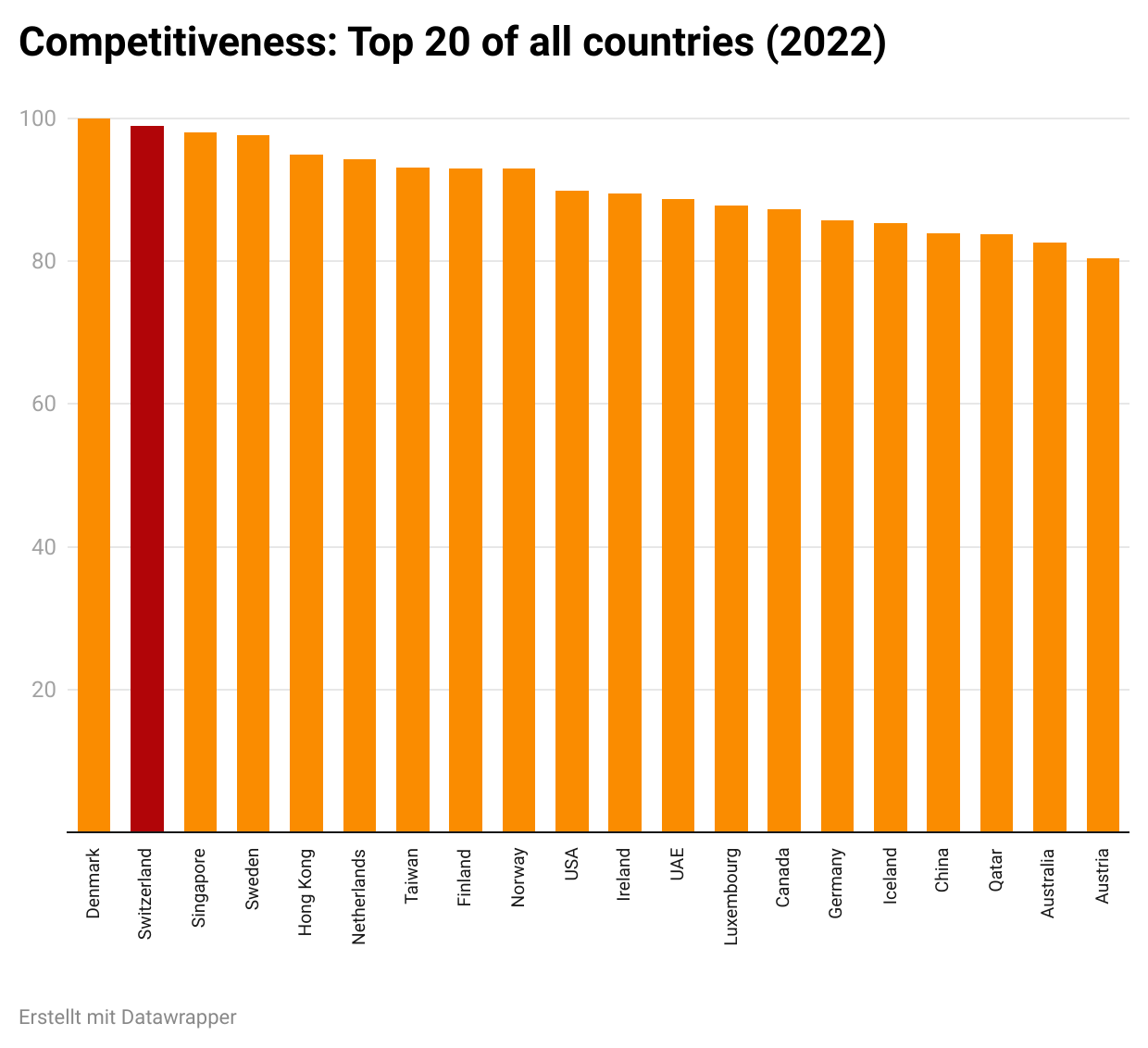How Switzerland remains successful - the seven pillars of innovation capacity
- Introduction Executive summary | Positions of economiesuisse
- Chapter 1 Introduction
- Chapter 2 Pillar 1: High competitiveness due to excellent framework conditions
- Chapter 3 Pillar 2: Excellent education system and strong dual apprenticeship programme
- Chapter 4 Pillar 3: Promote STEM subjects and entrepreneurship
- Chapter 5 Pillar 4: Prioritise funding for research and development
- Chapter 6 Pillar 5: Access to skilled workers from around the world
- Chapter 7 Pillar 6: International networks and cooperation
- Chapter 8 Pillar 7: Living innovation ecosystems
- Chapter 9 Conclusion
Pillar 1: High competitiveness due to excellent framework conditions
Innovation policy cannot be separated from competition and location policy. Optimal framework conditions are needed for companies to be able to develop. Switzerland has done well in this respect so far. Compared to other countries, it has not succumbed to political overactivism and has tended to be cautious about state intervention. No matter what international comparisons are made today: Switzerland is very well positioned overall.
Chart 1 shows a list of the most competitive countries by the IMD World Competitiveness Center. Switzerland ranks second behind Denmark but ahead of Singapore and Sweden. The index is made up of a wide range of indicators such as economic performance, administrative efficiency, country performance on the 17 UN Sustainable Development Goals (SDGs), the design of the tax system and the technological infrastructure. On the one hand, it is an assessment of the sustainable development of countries. On the other hand, it integrates additional efficiency criteria with regard to labour and product markets as well as factors that are conducive to innovation.
Graphic 1:

Source: World Competitiveness Ranking 2022, IMD World Competitiveness Center
If one compares competitiveness with innovative capacity, it becomes apparent that there is a clear correlation between the two variables. Of the 20 countries that are among the world's top innovators, 14 are also in the top 20 most competitive countries.
Competitiveness and innovative strength thus go hand in hand. This is not a new insight, for as early as the 1930s, Friedrich August Hayek noted that competition always leads to new discoveries and thus to an increase in knowledge. It is precisely those providers of products and services who succeed in "discovering" customer needs in the best possible way who are rewarded.
In order to strengthen Switzerland as a location for innovation, it is therefore of central importance to increase the country's competitiveness. It needs a balanced policy that, in conjunction with the economy, creates scope for innovation and good structural conditions for competition. This includes, for example, macroeconomic, political and legal stability, a low level of regulation, a low tax burden, access to world markets and effective protection of intellectual property. Equally important is the permanent effort to communicate new technologies transparently in order to promote their social acceptance and thus to encourage a general openness to technology among the population.
Intensive cooperation between public research institutions and the private sector plays an important role. It is crucial that the state focuses on these instruments when promoting innovative capacity. On the one hand, this ensures a very strong academic R&D network and good skilled workers, while at the same time it forces private companies to assert themselves in international competition without state aid.
While Switzerland has fared well so far, the lurking dangers should not be underestimated. Rising national debts, a rapidly growing public administration and ever tighter regulations are increasingly calling the Swiss model of success into question.
Takeaway 1: Competitiveness and innovation are closely intertwined. The creation of excellent framework conditions is the prerequisite for increasing the innovative capacity of a country.





